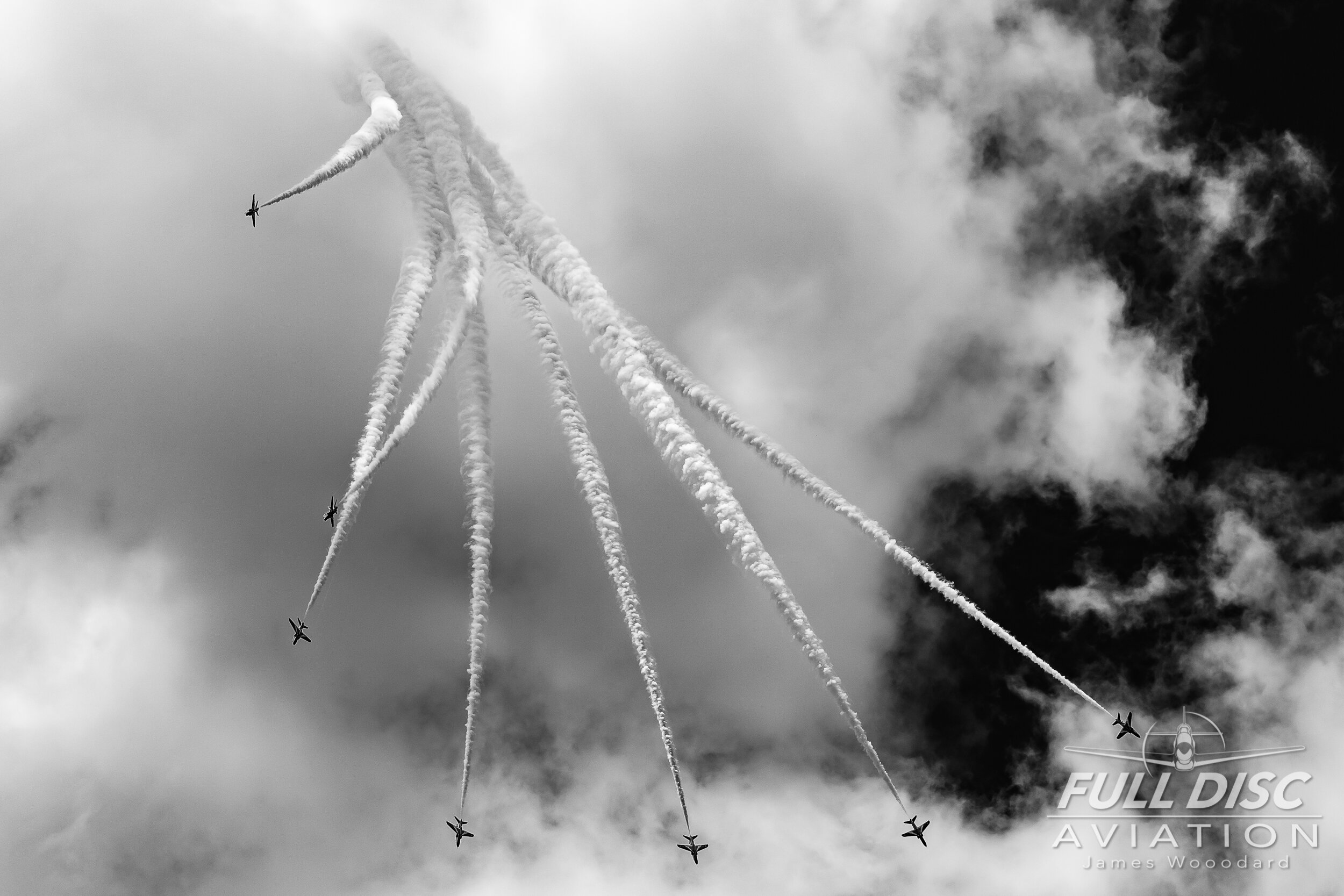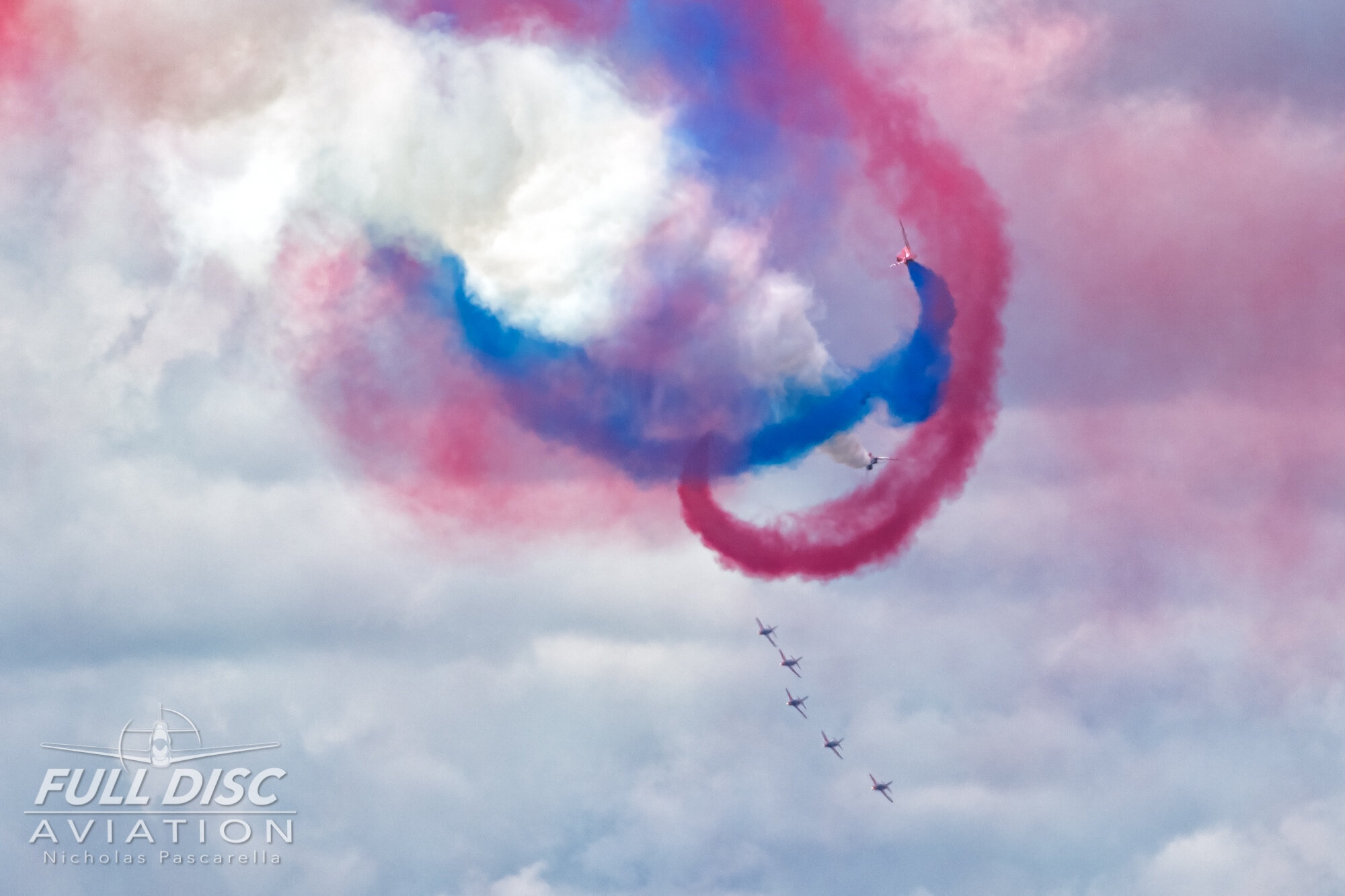Red Arrows
Prose: Ryan Tykosh
Photography: Ryan Tykosh, Nicholas Pascarella, Ryan Kelly, Richard Souza, Christian Gross, Nathan Gingles, James Woodard
“Variety is the spice of life”. I can remember hearing this statement years ago from my grandmother. I never really gave it much thought until I got older, and began to understand the importance of both cultural and everyday variety. Of course, the same can be said for airshows and aviation. Each year from March through November, airshow spectators and aviation geeks in the U.S are treated with the opportunity to witness some of our military’s finest pilots joined together to perform dazzling aerial displays across the country. Of course, I’m referring to the Blue Angels and Thunderbirds. Ask any airshow goer here in the states what they’re most excited for at a given event, and they’ll most likely respond with one of the two. Sometimes though, we’re treated to the opportunity to see how it’s done in another country’s military, a chance to share a love of aviation across cultures and witness firsthand the similarities and differences. This is where that word comes into play, “variety”.
While airshow attendees in the states are used to seeing the powerful and precise displays of teams like the Blue Angels and Thunderbirds, sometimes those of us who travel to event after event can become a bit, shall we say, “jaded”. Whoa there, don’t be ready to burn me at the stake just yet! Hear me out, I still love seeing both of these teams perform and love every second of the blistering precision and thunderous roar they bring to the table. However, from a photographer standpoint especially, seeing the same performances multiple weekends in a row can leave us looking for something different both to photograph and to experience. Enter YouTube. Who reading this now hasn’t spent countless hours watching videos of international fighter demos and teams, flying large formations trailing tri colored smoke over fans at the Royal International Air Tattoo (or RIAT as its commonly known)? Luckily, the past few years offered the chance to witness just that, the most recent having just wrapped up their largest North American tour to date.
We’ve been lucky the past few seasons as several European jet teams decided it was time to introduce those of us across the pond to their elegant and colorful style of flying. Since 2015, I’ve experienced the Breitling Jet Team (who stayed in the states for two full years on an extended tour), the French Air Force, or Armee de L’air, Patrouille de France several times in 2017, and on a special occasion at Joint Base Langley-Eustis the phenomenal French Air Force Rafale solo demonstration, which to this day remains the hardest jet demo I’ve attempted to photograph (if you’ve witnessed this agile demo in person, you know what I mean). Rumors began to circulate throughout the online chat rooms and blog posts that the Red Arrows, the Royal Air Force’s jet team, would be next to tour. In late fall 2018, those rumors were confirmed when the Reds officially announced plans for their largest North American Tour to date, consisting of nine weeks and dubbed “Western Hawk 19”. I’d seen the Reds perform once before during a short tour in 2008, but my photo skills were, let’s say “still developing” at the time, and I’d been itching for another opportunity to photograph the team with my newer gear.
In February 2019, the tour sites began to be made public along with more details on the tour. It was immediately apparent that this tour would be much more ambitious than the ’08 visit, as the tour would take the team across the North American continent from Halifax, Nova Scotia at the start to the conclusion at Huntington Beach, CA over a period of 11 weeks. As luck would have it, they were slated to perform at several sites those of us at Full Disc Aviation were already in planning to cover, specifically Thunder Over the Boardwalk in Atlantic City NJ, The New York Airshow at Stewart International Airport/ANGB in Newburgh NY, a NYC flyover, and the Spirit of Saint Louis Airshow and STEM Expo in St Louis, MO. In effect, we had the unique opportunity to photograph the team from multiple angles and multiple venues throughout the tour. Oh, the icing on the cake was the inclusion of an Airbus A400 to support the team and transport equipment and maintenance crews for the tour, which gave us a chance to catch this beast up close.
The Red Arrows were formed in 1965, flying the Folland Gnat (later made famous for its use in the Top Gun spoof, Hot Shots). The Reds flew this type until they took delivery of the BAE Hawk T.1 for the 1980 season. This introduction proved to be a perfect match as the agility and speed of the nimble little Hawk jets added much to the performance. The Hawks flown on the team are similar to those flown in advanced flight training within the RAF, with the exception of a slightly uprated engine which delivers a faster response time, the bright red paint scheme, and the trademark smoke-generation modifications.
The pilots who make up this group of UK ambassadors are among the top in the Royal Air Force and the world. Two or three new pilots typically join the team each year, succeeding those who finish their tour at the completion of the season. In contrast to the practices of U.S teams who typically add new team members every two years, Red Arrow pilots are normally with the team for three years prior to returning to frontline, instructional or staff duties within the RAF. Each team member selected must also be excellent communicators, acting as national and international ambassadors to represent the Royal Air Force across the globe.
I’ll admit, I wasn’t aware just how fast these jets were either until I saw one screaming in from over the Hudson for an overhead break to land at Stewart. Okay I’m lying, the single T.1 totally snuck up on me and I darn near dropped my camera as the calm air filled with the crisp shriek of the Rolls Royce Adour turbofan. As quickly as it appeared, it was already on final approach when I got a clear view. This was just an appetizer of what was to come over the next few days.
I arrived early at Stewart International Airport Thursday in hopes of catching some arrivals and departures for a mass flyover of New York City and in particular the Statue of Liberty which was to feature the Red Arrows, the F-35A Demonstration Team, the F-22 Demonstration Team, and the USAF Thunderbirds. The Blue Angels were originally slated to be included as well but unfortunately were unable to participate. In typical Red Arrows fashion, the team returned to the airport in a dissimilar formation with the pair of F-35A’s trailing the Reds in Big Battle formation prior to breaking to land individually. The Saturday and Sunday editions of the show featured full performances by the Red Arrows, with a full high show taking place one day and a low/rolling show the next. Both variations of their performances were in a word, captivating. The Red Arrows fly a two act show, starting with graceful formation loops and rolls consisting of all nine aircraft for act one then separating into their respective segments to deliver an action packed combination of high energy opposing passes and various formation maneuvers for the second act.
The maneuvers the team flies are as complex as they are graceful. It’s already difficult maintaining tight formation rolling with two to four aircraft, let alone nine. Another added visual effect is the use of colored smoke representing the colors of their country’s flag, a trademark of many European teams. The colors of red, white, and blue smoke can be switched on and off by the team. While this makes the performance more vivid, it also adds an element of complexity where switching the smoke on also mean switching the RIGHT smoke on. Take the Reds trademark fan favorite “Tornado” maneuver for example. During this one pass, the main formation of nine aircraft enters from crowd left with white smoke on. On signal from Red one, the solos detach from the formation and begin to roll around the smoke trail of the other seven jets in a helix fashion, with one trailing red smoke and the other blue. In the immortal words of a classic infomercial, “But wait, there’s more!”. Next, the solos switch to white smoke while continuing to roll around the other seven, who in turn have switched to white, red, and blue smoke while continuing to maintain formation while turning to the left. Oh, and the solos follow suit turning with the formation while still rolling. This all happens within a span of approximately 50 seconds of the 25-minute routine. Has your jaw dropped yet?
The Red Arrows are also unique in that they change up their routine each season, omitting and adding new maneuvers or swapping out newer maneuvers with classics of the past along with modifying the overall sequence. This gives the Reds performance a fresh look and feel year after year, even to those who are lucky enough to witness them in back to back seasons. In other words, you can see the team five years in a row and never really see the same show! For those reading in North America, the Canadian Forces Snowbirds adopted a similar procedure for giving their demonstrations a face lift each year (one reason I always look forward to seeing them fly, always something new to look for!). For the Red Arrows, several moves added to the 2019 display season included the Apollo Roll, recognizing the famous space program and the milestone anniversary of the historic moon landing in 1969. Other formations include the signature Diamond Nine, Big Battle, Concord, and Lancaster; the final two representing the famous aircraft of the same name.
The speed of these little birds I mentioned earlier comes into play during the show, at times you really don’t know where to look. In fact, at certain times no matter where you look, you can bet there’s at least one Hawk jet in there somewhere repositioning, rejoining, or pointed directly at you, so best be on guard and don’t blink! The dazzling display concluded with the signature Vixen break, performed head on to the crowd as the jets split trailing their tri colored smoke and wingtip vortices followed by a rejoin and at several U.S shows, an American flag painted in the sky using the colored smoke system prior to pitching up to land. Throughout the show, I glanced around at my fellow aviation photographer cohorts to see their reactions. No words needed to be said, as the grins I saw engraved on their faces said it all.
Then, for as long as the anticipation was built up over the weeks and months leading up to the show and tour, just like Christmas morning, it was over. The last glimpse I had personally of the team was the large formation of bright red specs headed west after their departure from Stewart International Airport. I found myself simply gazing at the horizon as the jets disappeared from sight, with a slight smile over my face knowing more of my friends would have the chance to see what I just had, and I was just as excited to hear/see their reactions.
The North American tour concluded in early October, as the team returned to RAF Scampton marking the successful completion of this incredible journey. “It’s the tempo and the amount we’re moving around changing location which is the toughest part of our tour” stated Red 10, Supervisor Squadron Leader Collins in an interview with our Nathan Gingles. It’s easy to forget just how much is actually being coordinated during the 11-week tour from the outside. To put it in perspective, the four days the team was in New York alone saw a mass formation flyover of the city, two full display days, and a flyover of the Hamptons in NY at the conclusion of Saturday’s show day and departing to the next tour stop at the completion of Sundays. It’s almost overwhelming to think about the ground covered from coast to coast and the choreography on all levels to make each stop on the tour a success. But to this group of professionals, it’s another day at the office. In fact, as I type this, the 2020 team is already hard at work training for the new year’s season.
I don’t know when I’ll have the opportunity to see the Reds fly again. For many of us it won’t be until we make our own trip across the pond, which may be sooner than later for a few of us. Until then, we have our memories and our photos to look back on and remember this incredible season. What follows is a collection of some of our favorite shots from three 2019 North American tour stops of Thunder Over the Boardwalk in Atlantic City, NJ (Christian Gross and Joe Diantonio), The New York Airshow at Stewart International Airport/Newburgh NY (Nicholas Pascarella, James Woodard, Ryan Kelly, Richard Souza, Ryan Tykosh), and the Spirit of St. Louis Airshow & STEM Expo in St. Louis MO (Nathan Gingles).. I think I speak for all of us here at Full Disc Aviation, and for all who witnessed the Reds aerial artistry during this history making tour, that it’s been an honor. Thank you for showcasing the pride of the United Kingdom here in North America. Come back anytime!





























































































































